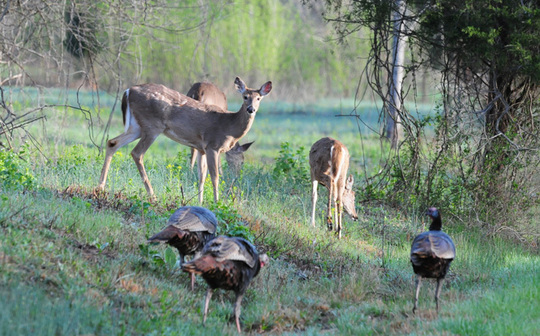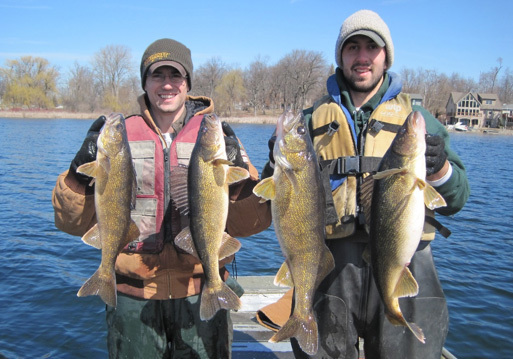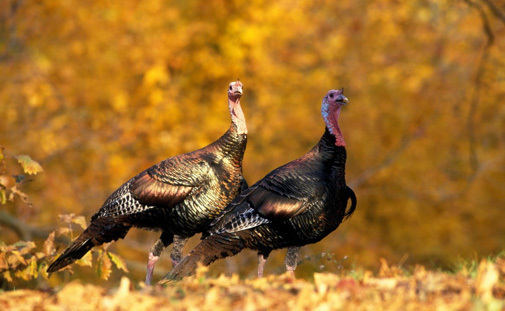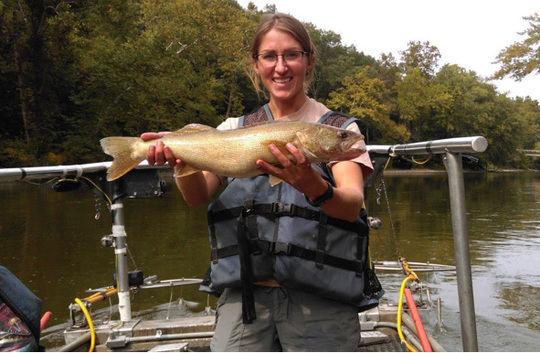Get ready for deer and turkey season
Indiana Department of Natural Resources sent this bulletin at 10/02/2018 06:25 AM EDT

|
 |
Four options to check in game
Hunters can check in their game online through the CheckIN Game system, in the Fish & Wildlife Online Services application, at an on-site check station, or by phone.
The online CheckIN Game system and the Fish & Wildlife Online Services can be used with any Internet-connected device. Both of these options are free, and you don’t need to set up an account online to check in your game. You can purchases licenses, check in game, view your check-in history, get your HIP number, purchase a gift certificate or make a donation through your account.
The phone-in option (1-800-419-1326) carries a $3 fee (Visa or Mastercard only).
Even at on-site check stations, station managers will enter information online through the CheckIN Game System. Stations no longer use paper log books or issue metal tags.
 |
Bass fishing heats up
Anglers can catch a variety of fish while stream fishing through the year, but fall is a good time to target bass.
As the water cools, many fish will be migrating to the deeper stream and river pools for the winter. As they move, they will be searching for some easy meals.
After the summer rains, the streams are typically lower and clearer, which can concentrate bass to the deeper areas. Use stealth to catch these elusive and skittish bass without warning the entire pool. Stay low. And when approaching a likely area, stay quiet.
During the fall, smallmouth bass are primarily feeding on crayfish. Using life-like crayfish imitation soft plastics, crankbaits, or tube jigs can be the ticket to high catches.
The great advantage to stream fishing is the vast amount of publicly accessible streams that anglers can wade.
To find great fishing spots with or without a boat, check out the Where to Fish Finder. This shows the public access sites for Indiana’s lakes and streams.
 |
Photo courtesy of National Wild Turkey Federation
Fall turkey season
The fall wild turkey hunting season and the early archery season started Oct. 1 and firearms season runs from Oct. 17-28. The late archery season runs from Dec. 8, 2018 to Jan. 6, 2019.
The bag and possession limit for the fall seasons is one bird of either sex.
Fall archery season is statewide. The counties open to the combined archery and firearms season, along with license requirements and all other information related to fall turkey hunting can be found online.
DNR wildlife biologists are here to help
Are you a property owner who wants more wildlife on your property? Are you looking for solutions to solve a problem caused by wildlife? If you answered yes to either question, DNR wildlife biologists are here to help.
 |
Large mammal reporting
As animal movements pick up in the fall, tell the DNR about large mammal sightings. Confirmed reports help inform biologists of dispersal events and management decisions. Photos and videos of large mammals are always helpful.
 |
 |
Fall walleye fishing
Fall is here and it’s the greatest time of year… for walleye fishing.
The cooling water temps spark a pre-winter need to feed and get walleyes moving into more shallow water. In lakes, they spend most of the time in deeper, darker water, then swim to 5-10 feet of water to feed. Trolling a three-way rig along dropoffs and rocky-gravel bottom areas or trolling spinners and crankbaits in open water can be effective approaches this time of year.
In northern Indiana, lakes with defined weed edges can be especially productive at dusk or moon-lit fall nights as the fish move out to feed. Casting crankbaits can cover water to find active fish.
In rivers, walleyes are attracted to slack water near heavy current or fast-flowing riffles and edges of deep pools near a good supply of food. Jerk baits, soft swimbaits, and jigs with minnows or soft twister tails do well for these fall river walleyes.
 |
Seeking input on fish, hunt, trap regulations
We want to hear your ideas on fishing, hunting, trapping and other fish-and-wildlife-related regulations in Indiana, including special permits.
Through Nov. 1, the public can use a convenient online form to contribute ideas and provide input on issues the DNR has identified for consideration.
 |
 |
Bird of the month: American woodcock
The American woodcock is a shore bird that can only thrive in forests less than 10 years old, and old fields invaded by shrubs.
Woodcocks are commonly found in areas with moist or wet soils, where they use their long, flexible, bill to probe the soil for earthworms and insects. During the breeding season, male woodcock display remarkably for females in what is called the "sky dance." Males fly up to 350 feet aboveground in a wide spiral before zigzagging toward the ground while giving chirping sounds.
Woodcock evolved to detect aerial predators like hawks while foraging on the forest floor. The American woodcock’s eyes sit so high and back on their skull, they essentially act as if they have eyes in the back of their heads.
 |
Upcoming events
- Oct. 6 – Veterans with Disabilities Archery Deer Hunt, Roush FWA
- Oct. 20 – Fishing Day at Memorial Park, Huntington
- Oct. 20 – Trout Fishing at Shoaff Park, Fort Wayne
- Nov. 3 – Learn to Trap Workshop, Kingsbury FWA
More
- Where to Hunt
- Where to Fish
- Buy a license
- Property Information
- Nongame and Endangered Wildlife
- 2018-19 Hunting Seasons
- Fishing Guide

About Fish and Wildlife Management in Indiana
Fish and wildlife management and public access are funded by fishing and hunting license revenue and also through the Wildlife and Sport Fish Restoration Programs administered by the U.S. Fish & Wildlife Service. These programs collect excise taxes on sporting arms and ammunition, archery equipment, fishing equipment, and motor boat fuels. The money is distributed among state fish and wildlife agencies based on land size and the number of licensed anglers and hunters in each state. Find out more information about fish and wildlife management in Indiana at Wildlife.IN.gov.
Having trouble viewing this email? View it as a Web page.




